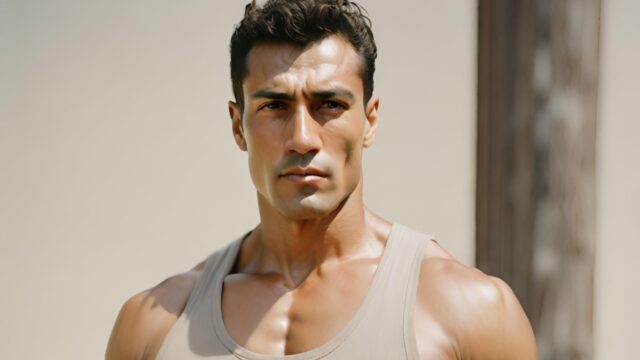“Never to lose one’s semen. It is the essence of power, strength, endurance, and beauty.”–Pranaman
In India, the belief in the power of semen is alive and well among wrestlers, also known as pahalwans. They are so dedicated to conserving and enriching their semen that they are fervently celibate. Celibacy is considered a paramount means of establishing character and discipline in wrestling, according to the principles of Brahmacharya, a key element of Hindu religious thought.
Wrestlers compete wearing only a ‘langota’ (a type of Indian underwear), and the concept of Brahmacharya is a unique aspect of traditional Indian wrestling. The belief is that retaining semen transforms it into spiritual energy, a central concept in Ayurveda. Losing semen is equated with losing strength, and wrestlers take this belief seriously. This involves not only celibacy and avoiding masturbation but also avoiding thoughts and actions that inflame sexual desire, such as avoiding thoughts of women and eating simple, unprovocative food.
The phrase “to keep a tight langota” is used to describe celibacy, and wrestlers often speak of the decline of their wrestling abilities when they “loosen their langota.” Many of the best wrestlers in India never married.
Indian wrestling, or Bharatiya kushti, is a way of life that combines sport and spirituality. The wrestlers, or pahalwans, are ascetics who are deeply devoted to seeking selflessness and knowledge of pure truth. However, even more than other Brahmacharis, wrestlers are deeply concerned about losing semen, which they believe contains the essence of life. They are even alarmed by the slightest loss of semen through nocturnal emissions.
Semen is fundamental to their athletic pursuits, and they equate the loss of one drop of semen to the loss of sixty drops of blood. It is not just another fluid, but a distillate of blood, marrow, bone, and other bodily substances, and embodies the very essence of human existence.
A traditional Indian wrestling master states that a person should treat their semen with the same care as a jeweler would with their most valuable diamonds. This idea is backed by the concept of Brahmacharya, which involves never losing one’s semen as it is seen as an essence of power, strength, endurance, and beauty.
To maintain Brahmacharya, wrestlers have a structured lifestyle and practice celibacy. They wear a langot, a tight G-string, to keep their genitalia trussed up and avoid any contact with women. They also avoid lascivious thoughts, practice chanting and praying, and keep their minds focused on the Supreme Being. Masturbation and unbidden wet dreams are strictly forbidden, and they have measures in place to prevent them, such as washing their feet in warm water before bed and reflecting on the Supreme Being.
Diet plays a crucial role in maintaining Brahmacharya, with milk being the centerpiece of the wrestler’s nutritional regimen. Milk is believed to intensify virility and is seen as an ideal liquid for adding to the body’s reservoir of semen. Additionally, ghee, or clarified butter, is believed to produce strong semen and is considered a more important source than milk.
Wrestlers also consume large amounts of almonds mixed with milk and honey, as well as hashish, which is believed to calm or erode passion. They eat lightly spiced food, avoid pickles and chutneys that stimulate sensuality, and abstain from tobacco. Alcohol is seen as antithetical to semen and is avoided by wrestlers.
Wrestling is considered an important activity for maintaining celibacy, especially among young men in their late teens and early twenties. The sport is practiced in an akhara, or gymnasium, which is free to all men except outcasts, Muslims, and women. The manager of the akhara acts as a teacher and instructs the disciples in wrestling, as well as devising a total life program for each wrestler, including exercise, food, and rest, as well as spiritual counseling.
Wrestlers view themselves as “extraordinary men who do extraordinary things to and with their bodies.” The sport combines physical activity, similar to Olympic wrestling, with a spiritual quest for physical strength, celibacy, duty, obedience, honesty, and humility. Religion plays a significant role in wrestling, and the akharas have shrines or temples on site, with wrestlers being compared to the Hindu god Lord Hanuman.
Wrestlers do not live in the akhara, but at home and attend school or work. They rise early, at around 3 AM, and follow a rigorous routine before heading to the akhara for workouts and wrestling practices. The ideal day for a wrestler involves rest, eating, and sleeping for the rest of the day, but in reality, most continue with their other responsibilities.







